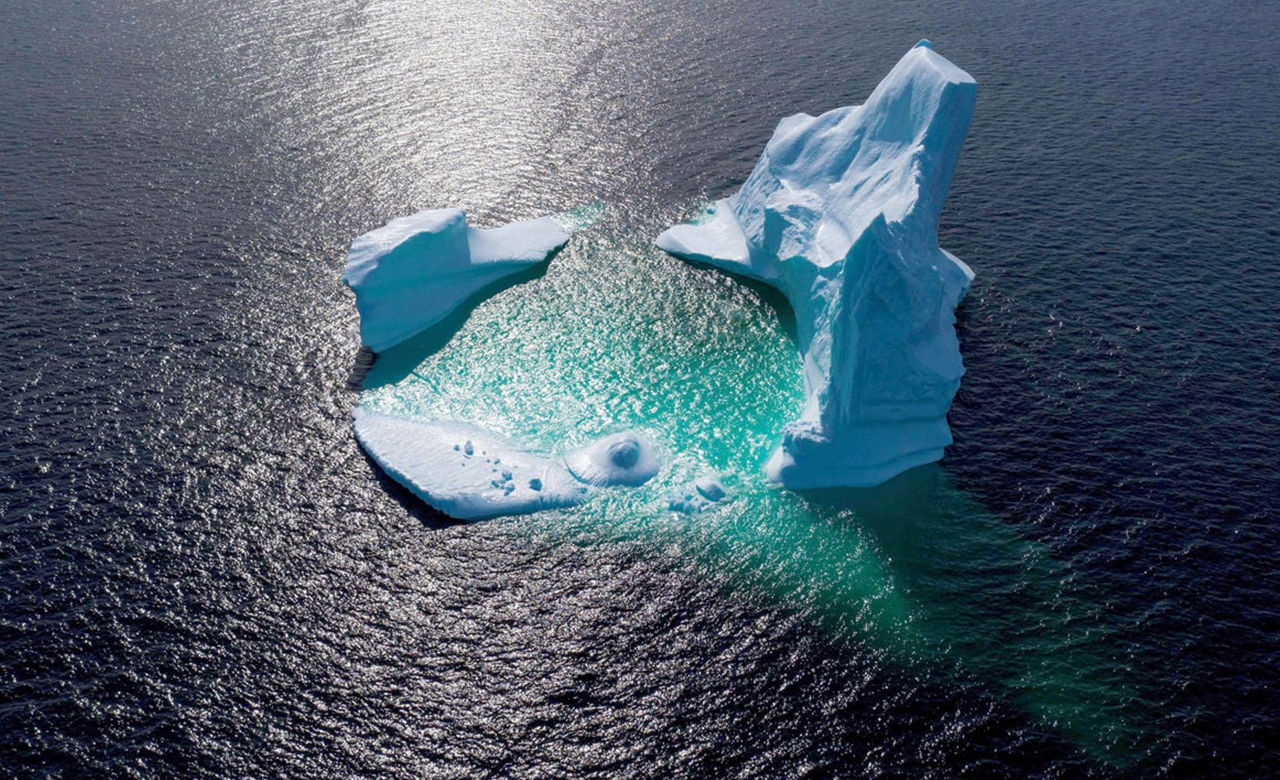
Climate Change is a lived reality now. There is no doubt that human activities are changing the climate with clear consequences on the weather. Recent years have witnessed several weather extremes worldwide, and global warming exacerbates these extremes. The number of climate, weather, and water-related disasters has increased almost five-fold in the past 50 years.
The most recent years, from 2015 to 2021, were the warmest on record in human history. Consequently, heat waves, heavy downpours, floods, droughts, aridity, wildfires, and storms are getting worse, breaking records with alarming frequency. Moreover, many weather events are becoming more intense due to human-induced climate change. And as a result, climate change’s physical and socioeconomic impacts will be increasingly devastating in the coming years.
COP27: Why is it so important?
The United Nations Conference on Climate Change (COP27) is happening in Egypt from Nov 6. Amid soaring energy and food prices, disasters such as heat waves, roaring wildfires, and epic floods –are imposing a terrible toll on people worldwide.
A concerted effort and effective implementation are the only ways we can overcome an existential threat at COP27. In light of these interconnected crises, it is imperative that countries work together at COP27 to tackle the after-effects of rising global temperatures that disproportionately affect developing countries. Finance remains the cornerstone for implementing climate actions and scaling up ambition; hence, it has been at the heart of the UNFCCC process and the Paris Agreement negotiations. The Glasgow outcomes reiterated the centrality of finance as a catalyst for progress on all aspects of the global climate agenda, as stated by the UN.
Why is the world looking forward to COP27?
Unprecedented climate disasters happened this year after COP26 in Glasgow, UK. More widespread and devastating disruptions happened due to heat, drought, floods, fires, and storm impacts across the world. As a result of these compounding crises, COP27, taking place in Egypt, is an urgent opportunity for countries to work together. It is imperative to speed up climate action by addressing some of the awaiting concerns and rebuilding confidence that global collective action can address humanity’s most significant challenges.
The risk of climate tipping points is rising rapidly as the world heats up
Currently, the global temperature has risen by 1.1°C above pre-industrial levels. It has been linked to the lower end of a few tipping points (a set of conditions beyond which climate change becomes self-perpetuating and may lead to abrupt, irreversible, and dangerous impacts with severe implications for humanity) and uncertain ranges. Potential signs of destabilization in parts of the Greenland ice sheet, Atlantic Meridional Overturning Circulation, and Amazon rainforest have already been detected. Another major tipping point is the melting of Greenland and Antarctica’s ice sheets. It would have global consequences due to substantial additional sea level rise for hundreds to thousands of years (Figure 2). Climate change can also weaken the Atlantic Meridional Overturning Circulation (AMOC), an important driver of regional and global energy distribution in the climate system. Additionally, regional tipping points, such as the drying of the Amazon rainforest, may have cascading global effects.
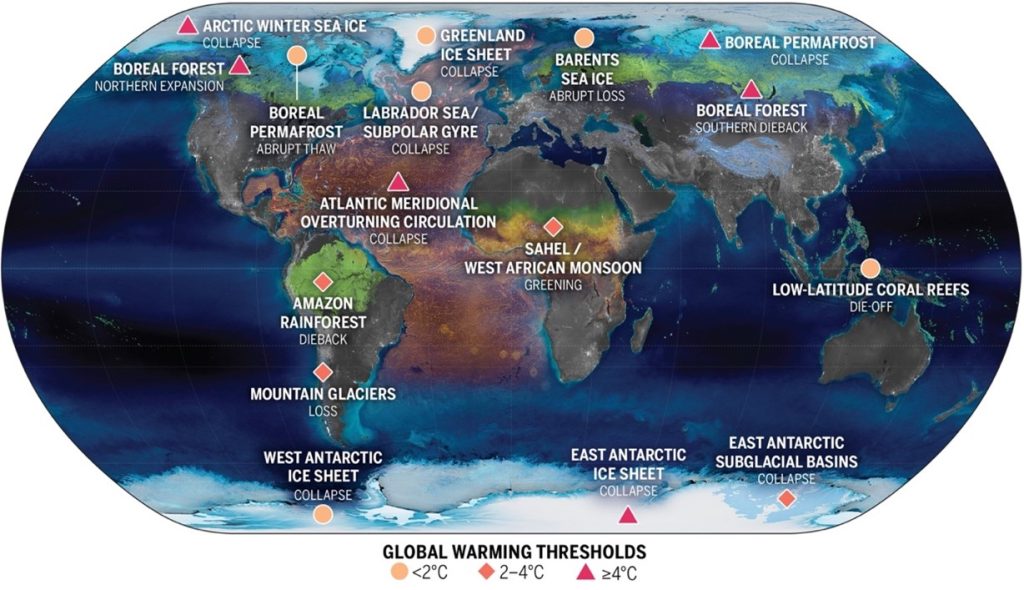
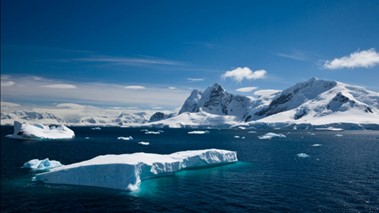
Recent research findings point out that even if we limit warming to 1.5°C, we may still reach a few critical climate tipping points, including the collapse of the west Antarctic and Greenland ice sheets and the complete thawing of Arctic permafrost. Researchers estimate that if global warming reaches 2oC, it could trigger at least six more tipping points. Tipping points occur over timescales that range from several years to centuries. There is a strong likelihood that passing one tipping point will lead to others, producing cascades (such as the death of rainforests and coral reefs, a reduction in ocean oxygen, a change in the Indian summer monsoon, or the release of carbon dioxide from permafrost melting). Further warming poses a severe threat to tipping events, requiring the world to accelerate decarbonization radically.
As outlined below, some of these weather extremes have occurred globally.
Heatwaves
In June – August 2022, Europe had its hottest summer on record and was affected by extreme heatwaves and drought. Across western Europe, the combination of August’s heatwave and prolonged dry conditions increased wildfire activity, intensity, and persistence. A new national record of 47 degrees Celsius was set in Portugal in July, and for the first time, temperatures in the UK exceeded 40 degrees Celsius. France had its second warmest summer after 2003. During these three summer months, there were heat waves over central and eastern China. Delhi experienced five heat wave strokes between March and May 2022, with record-breaking temperatures reaching up to 49.2°C in India. Extreme weather events often have long-lasting socioeconomic consequences, and the most vulnerable communities are often ill-equipped to respond, recover, and adapt.
High-intensity rainfall and flash floods
High-intensity rainfall spells are another extreme weather events that lead to flash floods which remain one of the world’s deadliest natural disasters, claiming more than 5000 lives annually’ and having substantial social, economic, and environmental impacts. Flash floods account for approximately 85% of flooding cases and have a higher mortality rate than riverine and coastal floods. A recent World Weather Attribution analysis suggests that ongoing climate change has increased monsoon rainfall intensity by up to 50%. The Himalayas is among the top snow-deposit mountain range of ice and snow in the World after Antarctica and the Arctic, which are heavily impacted by flash floods exacerbated by snowmelt caused by global warming. It was highlighted by a disaster in Uttarakhand in the Indian Himalayas on February 7, 2021, after a part of the Nanda Devi glacier collapsed, causing a massive flood in the Rishi Ganga / Dhauliganga river. This destroyed two hydropower plants, burst open dams, and led to a large number of casualties and widespread environmental damage in an ecologically fragile area. In addition, our coastal cities and settlements, such as Mumbai, are highly likely to face more frequent and extensive coastal flooding due to rising sea levels and storm surges.
Droughts
On the other hand, Europe in 2022 is experiencing the worst drought in 500 years, with river flows down by around a third on average. Somalia this year faces a famine after its worst drought in 40 years. England officially declared drought in many regions in 2022, and the US is facing drastic water shortage as rivers and lakes hit dangerously low water levels. Chile started rationing water after its record-breaking 13th year of drought. In southwestern China, drought has caused hydropower shortages due to water level declines.
A severe deficit in the rainfall during the summer monsoon of 2022 has affected Uttar Pradesh, Jharkhand, West Bengal, and Bihar, the major rice-producing States of India. The mountain communities’ water requirements in the Himalayas are supported by snow and glacier melt. The disappearance of glaciers in the Himalayan mountain region, as evidenced in recent years, will increase the vulnerability of communities living in the downhill region and calls for better adaptation strategies to improve the resilience of high mountain communities.
La Niña and El Niño patterns
The ongoing La Niña phase of the equatorial Pacific Ocean (sea-surface temperatures are more relaxed than usual) has been persistent for over 24 months. Moreover, it is predicted to persist for at least six months into 2023, making it one of the longest-ever La Niña episodes in recorded history (Figure 3). In the absence of a strong El Niño preceding it (one between 1973 and 1976 and the other between 1998 and 2001), the reason for the current La Niña episode is unclear. But, this is likely to have wide-ranging implications for weather events worldwide in the coming months and can potentially aggravate floods and droughts in different regions.
The continuance of La Niña further into 2023 is not bad news from the Indian standpoint. But it is not the same for many other areas where La Niña has very different impacts. For example, the widespread drought in the United States and flooding in eastern Australia this year could have resulted from the prolonged La Niña. The excessive rainfall in Pakistan, which is experiencing its worst flooding disaster, can also be blamed partly on La Niña. The persistence of La Niña has also led to a worsening of the drought in Africa this year.
Therefore, global climate policy needs to be improved in light of the simultaneous occurrence of extreme droughts and flash floods across the globe.
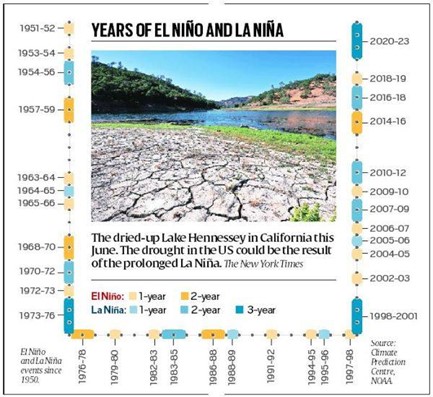
What did Countries Pledge During COP26?
The first agreement on the target of keeping the rise in the Global Average Temperature below was adopted by 196 Parties at COP 21 in Paris on December 12, 2015. In Glasgow, UK, last year, COP26 committed to advance the implementation of the Paris Agreement by implementing actions that will lead to a low-carbon, sustainable future.
New national mitigation pledges since the Glasgow Climate Pact of 2021 agreed upon at UN Climate Change Conference (COP-26) by countries for more aggressive engagement in mitigating greenhouse gas emissions by 2030 show some progress toward further lowering greenhouse gas emissions but are still deficient. It was suggested that the world’s greenhouse gas emissions trajectory be put on course for a catastrophic 6oC of warming by the end of the century (ecological collapse). The best chance of limiting warming to 1.5 to 2o C (as envisaged under the Paris Agreement) will require emissions to peak no later than 2020 and drop to net zero by mid-century. These new pledges will have to be four times more ambitious to limit warming to 2°C and seven times more ambitious to restrict warming to 1.5°C. Global warming during the 21st century is estimated (with 66% probability) at 2.8°C (range 2.3°C – 3.3°C), assuming a continuation of current policies, or 2.5 °C (range 2.1°C – 3.0 C) if new or updated pledges are fully implemented, stated by World Meteorological Organization
It is thus clear that collectively, countries are falling short of restricting the warming within 1.5oC with their new or updated mitigation pledges.
Are there any critical gaps left at COP26? Why are these important?
Some of the key gaps that need to be addressed on priority in COP27 include:
- Scale up support for adaptation action for countries to make more detailed and ambitious commitments for implementation,
- Assure that the $100 billion climate finance delivery will be met by 2023 and move towards new commitments,
- Create a financing mechanism for addressing the damage and losses,
- Major emitting countries need to strengthen their 2030 emissions reduction targets by the end of 2022 to better align with the Paris Agreement’s goal of limiting global temperature rise to 1.5oC with adequate backing of policies and investment, and
- Advance the new and innovative formats of politically relevant Global Stock take to set the pace for climate action,
- The public and private sectors are to come together and work towards the net zero strategies by keeping 1.5°C within reach and building resilience to climate impacts.
- Funds should be allocated to develop and spread technologies that could remove CO2 and Methane from the atmosphere. The effort should be two-pronged – to reduce the cost of implementing such technologies and make the technology freely accessible to the whole world.
World leaders, governments, and businesses should seize the opportunity at COP27 to foster greater cooperation when the unsettled world needs it most by addressing the above-listed gap areas. In addition, governments must demonstrate where they have made progress regarding their short-term and long-term targets towards net zero and should also elevate accountability conversations.
Critical decisions to be taken during COP 27
Earth is warming much faster than it has over human history. But unfortunately, none of the natural causes can fully explain the climate changes we are seeing today.
There is an urgent need to reduce vulnerability to extreme weather, particularly in large urban cities with dense populations. With rapid urbanization and soaring heat, most countries must search for sustainable, clean, and energy-efficient solutions to boost climate resilience and reduce the “urban heat island effect” where buildings and roads absorb and retain heat. Likewise, improving stormwater infrastructure is required to address the stress and strain of growing losses on urban communities. Rather than relying solely on government agencies, corporations and private companies are also taking action on climate change and integrating adaptation and mitigation into ever-evolving urban environments.
The circular economy model should be adopted by industries that encourage sharing, reusing, repairing, refurbishing, leasing, and recycling existing products and materials. In this way, the life cycle of products is extended, which, in practice, implies reducing waste to a minimum (consume less – consume better). New regulations and frameworks are adding to the momentum behind the positive nature movement. The COP15 within the UN Convention on Biological Diversity (CBD) agreed (in Abidjan, Côte d’Ivoire, from 9 to May 20, 2022) to preserve, protect and restore nature and Earth’s biodiversity through 2030, which is a measure of all life in this planet, as well as its interactions with the physical world. India has committed to reducing the emission intensity of its GDP by 45% by 2030 (from the 2005 level) and achieving about 50% cumulative electric power installed capacity from non-fossil fuel-based energy resources by 2030. India is aiming to reach net zero emissions by 2070.
While the above steps will ensure that they are not adulterating the atmosphere further, to provide a faster movement towards controlling warming, strong and quick action is needed to build and spread technologies that can remove CO2 and Methane from the atmosphere. It is a major gap that must be addressed to speed up the process of reducing these gases in the atmosphere.
As the latest IPCC report (AR6) underlines – “adequate funding, technology transfer, political commitment, and partnership should lead to more effective climate change adaptation and emissions reductions.” Early warning systems are effective adaptation measures that save lives, reduce losses and damages, and are cost-effective. However, less than half of countries in the world have the existence of Multi-Hazard Early Warning Systems, with coverage deficient in Africa, Least Developed Countries, and Small Island Developing States (Figure 4).
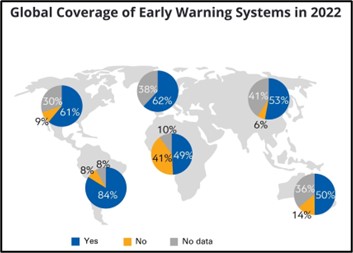
A collective effort at COP27 to address the existing gaps (particularly in mitigation, adaptation, and climate finance) should be taken so that the negotiations can lead to actions. In addition, there is an urgent need for specific, measurable, and impactful initiatives to be implemented for developing countries worldwide.